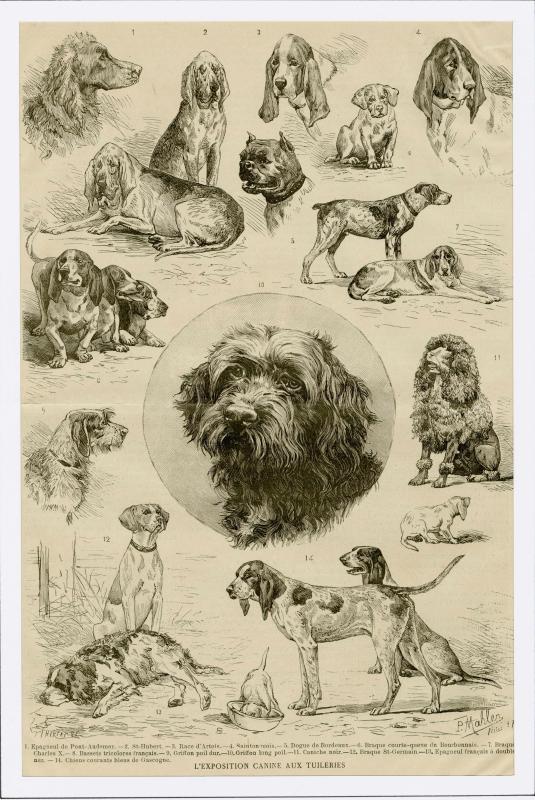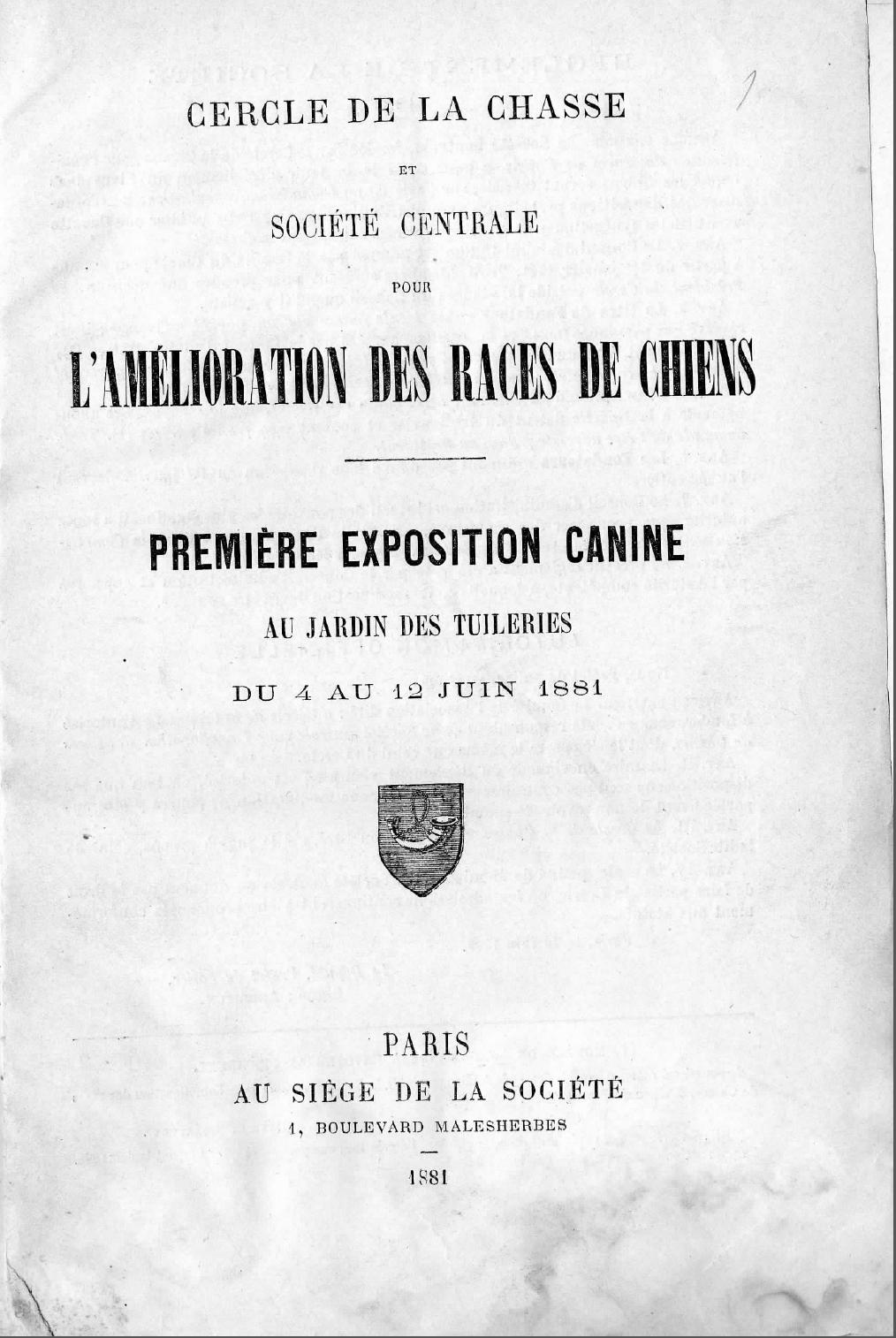When was the first edition of the show held and how dit it develop?


Advertisement for the first show in Paris in 1881 - the show that can be considered as the first French championship show
The first show organised by the Société Centrale Canine took place in 1881 in the
Tuileries. 1863, more than 20 years earlier, already saw nearly 1,000 dogs taking
part. When we say that France has a long tradition of dog sport, this is no exaggeration.
Are you happy about this year’s edition?
I think - by all accounts - we can say so. The only think that could have been better
would have been to have had more visitors.
How “international” can this event be considered (judges, exhibitors, etc.)?
The panel consisted of 85 judges, 25 of whom (i.e. 30%) came from abroad.
Exhibitors came mainly from France, but also from Belgium (4.27%), Germany (2.8%),
the Netherlands (1.32%), Switzerland (1.25%), Italy (1.06%), Spain (0.95%), the
United Kingdom (0.48%), Luxembourg, Russia, Poland, Denmark, the Czech Republic,
Slovakia, Hungary, Norway, Serbia, Finland, Slovenia, Sweden, Austria - a total
of 21 countries.


First page of the 1881 show catalogue
What is your strategy (if any) to attract more exhibitors, public and media attention?
There are two strategies:
EXHIBITORS
- Here we obviously have the traditional channels: the trade press, with whom we maintain
a very good relationship. We make stands available to them and exchange information
before and after the event.
- A visual aid: a poster was designed showing a very French representative - the small
Berger des Pyrénées or Pyrenean Sheepdog, the SCC's current mascot.
- We also relied greatly on modern communication techniques. Entry forms were twice
e-mailed to the potential 38,000 exhibitors listed in our database.
- A special web-page was also set up on the Lorraine Kennel Club's website, containing
all information needed to take part.
- Moreover, the event was advertised on Facebook.
VISITORS
- In the week before the show, a front-page advertisement appeared every day in the
main regional newspaper Le Républicain Lorrain.
- On-site press conferences were held and press kits were sent out to more than 50
regional media companies.
- We had a partnership with the City of Metz for holding a children's drawing competition
and for having city dignitaries award the prizes in the main ring on Sunday. The
city authorities also helped us out with advertising boards and an article appeared
in the city newspaper. The City's Cleaning Department was also present, having its
own stand at the show.
- We were also featured on local radio, with ads being broadcast and with a contest
for free entry tickets.
- Internet: We were featured on several websites - the Lorraine Kennel Club website,
the web version of the Républicain Lorrain newspaper, and the City of Metz website.
- There were articles in various newspapers.
- We were interviewed by the local television channel MIRABELLE.
In addition, the SCC's public relations department sent out press kits to the media
- whether specialised in animals or general-interest.
Did you have to take into consideration specific circumstances (social, economic,
country-specific, etc.) when preparing and organising this big event?
We need to say that we had bad luck when it was announced (in October 2011) that
the Tour de France would be coming through Metz on the Friday and Saturday of the
championship show.
Other than the fact that traffic in the city got very congested, public interest
for this very popular event (the Tour de France had not been through Metz for the
last 12 years) detracted potential visitors' attention from our event.
In addition to these problems, we also had difficulties finding accommodation for
all judges and volunteers, and for exhibitors, especially on the Friday.